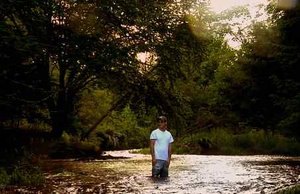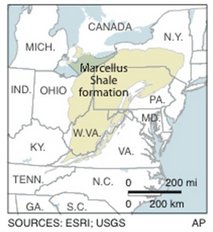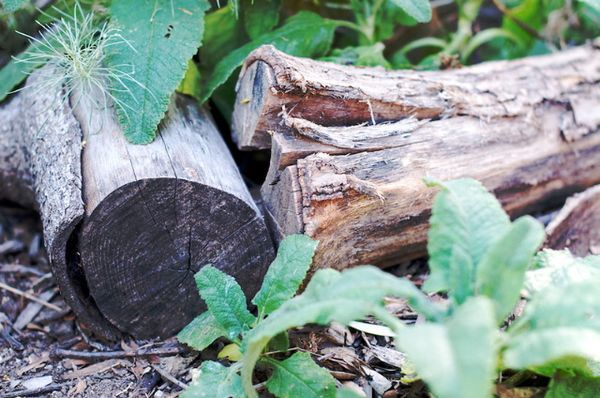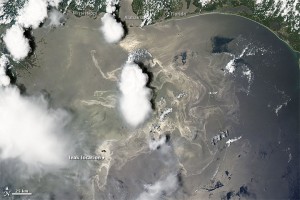The Dry Garden: Coyote mint
Posted on | June 25, 2010 | No Comments
 Paradise is at once so attainable and so far away.
Paradise is at once so attainable and so far away.
This column was going to be about how the most immediate and affordable thing that Southern California homeowners could do to reduce our collective dependency on fossil fuel would be to rip out lawn. But events in the Gulf of Mexico are too crazy-making to be sure that it wouldn’t be the garden-writing equivalent of picking a fight at the dinner table. So this column is about coyote mint. Click here to keep reading The Dry Garden in the Los Angeles Times.
From press release to pocketbook
Posted on | June 24, 2010 | No Comments
Cadiz, Inc today announced that the Santa Margarita Water District and Three Valleys Municipal Water District have agreed to stand as lead agencies in a review under the California Environmental Quality Act to evaluate the risks of reviving a previously discredited plan to mine Mojave Desert groundwater to serve the Southern Californian urban conurbation.
The share price responded with a jump of more than 14 per cent before declining.
No water has been produced by this 12-year-old scheme, however for the last year skillfully deployed press releases have made Cadiz a volatile and occasionally lucrative stock. It would take a SEC investigation to see if a run on the shares last year involving a privately secured endorsement from the Governor of California amounted to insider trading by directors at the expense of stockholders.
Today’s news about two Southern California water companies taking the lead in a state environmental review for the project comes on the tail of assurance by Cadiz to its shareholders in April 2009 that the review was already underway. By June 2009, Cadiz had backtracked, telling its shareholders, “the environmental review process is expected to begin shortly following the submittal of the Project description.”
If Cadiz has been stalling real review, it might be because of the abysmal grading its scheme to extract water from the desert received when the US Department of Interior performed an environmental review of the old (almost identical*) project a decade ago. After it was published, risks were seen as so high and rewards so marginal that the then sponsor, the Metropolitan Water District of Southern California, withdrew from the project.
This latest move involving two small water agencies is part of an ongoing attempt by Cadiz to get around Metropolitan’s veto by individually courting smaller agencies in Met’s service area. However, it would be naive to assume that any water will ultimately flow to the region because of the project. From the standpoint of Cadiz directors, it scarcely matters. As today’s share price jump indicates, with little more than some influential friends, well-timed press releases and even a discredited plan, it’s perfectly possible to bilk the market without actually producing a drop. Meanwhile, the rate-payers of Santa Margarita and Three Valleys are now where MWD was a decade ago: in line to foot high bills for an environmental review against compelling evidence that the project will still flunk.
UPDATE: Eric Spillman at KTLA blogs that Cadiz CEO Keith Brackpool was a likely companion on the trip of Mayor Antonio Villaraigosa to last year’s climate conference in Copenhagen. Via LA Observed. Villaraigosa worked for Cadiz and Brackpool before becoming Mayor of Los Angeles and the two have a long history traveling together, including jaunts to China and Iceland. Recently, Cadiz has used company attorney Scott Slater as spokesman, keeping the jet setting political fixer Brackpool behind the scenes.
June 28: The Los Angeles Business Journal reports that Golden State Water will be among the local water agencies involved in the CEQA process. Golden State has been involved with Cadiz for a year, but a press release maybe worth a bump on the market.
*To judge from publicity materials released by Cadiz, a key difference between the two plans is that the new iteration calls for pumping of the deep set waters of the carbonate aquifer rather than the alluvial fan of the target basin. Drawing water from the carbonate aquifer would make the pumping impacts almost impossible to monitor and therefore potentially far more destructive.
This post has been updated.
‘Erin Brockovich’ writ large
Posted on | June 21, 2010 | 2 Comments

Josh Fox standing in a stream that passes by his home in Pennsylvania. Source: HBO. After fracking began in Dimock, Pa., local livestock that drank water near gas mines began losing their hair. Fox took up the subject in the documentary 'Gasland' after his family was offered nearly $100,000 by a company for drilling rights on their land. From the Philadelphia Inquirer. Click here to read its review of 'Gasland.'
For Westerners, the connection between gas and water usually centers on Chromium VI, the chemical once used as a coolant by PG&E gas compressor plants and subsequently the Mojave Desert groundwater pollutant made famous by “Erin Brockovich.”
Yet a far greater, clear and present threat exists to a shared watershed extending from New York to West Virginia and throughout gas fields of the midwest and Texas. That is “hydrofracking,” the process in which chemically laced water is used to fracture rock for gas extraction.
Gas companies decline to state what chemicals they use, citing commercial sensitivity. “The casing design and cementing of wells are orders of magnitude more important than knowing what’s in the secret sauce at fracturing companies,” Charles Stanley, chief operating officer of the natural gas mining exploration group Questar Corp told the Houston Chronicle last December.

For the industry's view of events from the Global Petroleum Forum, and how "fracking" was imported from Texas to deal with Northeastern rock, click here.
Moves to force them to treat fracking water before returning it to streams and groundwater have been unevenly applied. To see the havoc that fracking waste water is wreaking throughout the Marcellus Shale (left), watch Josh Fox’s 2010 Sundance Film Festival award-winning documentary “Gasland” on HBO tonight at 9pm. Also look for him to be interviewed by Jon Stewart. Via WaterWired.
Note: Fracking is a frequent subject of weekly news round-ups on this site. For a range of links on reports on hydrofracking in Texas, West Virginia, Pennsylvania and New York, go to the search box of this website and enter ‘fracking’ and ‘frack.’
The week that was, 6/13-19/2010
Posted on | June 19, 2010 | 1 Comment

'Tanker Traffic' by Kathryn Altus, 2010. Water based oil on canvas, 36" x 24" and part of the "Some seas" exhibit at the Lisa Harris Gallery in Seattle. Click on the image to be taken to the gallery.

'Tanker Traffic 2' by Kathryn Altus, 2005. Oil on canvas, 24 x 20" oil on canvas. Click on the image to be taken to the artist's website.
Approximately 40 percent of the coastal wetlands of the lower 48 states is located in Louisiana. — “Watermarks,” LaCoast / USGS*
Oil has been observed on approximately 503 total miles of U.S. coastline. –– Florida update, Gov Monitor, June 19, 2010
“… simply protecting the shore and the nesting habitat is not protecting the birds that forage out over the water.” — Melanie Driscoll, director of bird conservation for the National Audubon Society’s Louisiana Coastal Initiative, Yale Environment 360, June 15, 2010

Sea turtle specialist Peter Lutz. Click here for his obituary in The Journal of Experimental Biology.
Three of [the top five oil companies BP, Exxon, Conoco Phillips, Chevron and Shell] listed the phone number for the same University of Miami marine science expert, Peter Lutz, who died in 2005. — “Lawmakers attack plans oil companies had in place to deal with a spill,” The Washington Post, June 16, 2010
Thinking about your Florida beach vacation and about what’s happening in the Gulf? Here’s what you need to know. Florida has 825 miles of beaches, 1,260 miles of coast line. There are plenty places in Florida where you can enjoy crystal clear waters and a great beach vacation. See for yourself in real time at FloridaLife – webcams, daily video, beach updates and real photos to help you find your own Florida beach! Get the Facts. Go to FloridaLife and visit Florida.com. — “Visit Florida launches new ad in oil spill marketing response campaign,” VisitFlorida — pitchengine.com, June 16, 2010
If oil seeps deeply enough into the marsh, it will not only kill the grass above ground but also the roots. Those roots are what hold the marsh together, keeping bright green land from collapsing into the Mississippi River delta and the Gulf of Mexico. — Naomi Klein, “Gulf Oil Spill: A hole in the world,” London Guardian, June 19, 2010
Sperm whales live in deep water where there are layers of subsurface dispersants and oil, and they feed on squid, which also could be contaminated by the oil and chemical dispersants. — “NOAA finds dead whale south of spill,” McClatchy, June 18, 2010
“Bob” finished fourth in its group. — “BP CEO’s yacht outing infuriates Gulf residents,” Associated Press, June 19, 2010
“I don’t think BP’s accident will be driving anyone away from China deep water.” — Consultant Changlin Wu, “China to step up exploring in deep water,” Financial Times, June 18, 2010
It’s as if the Earth has been smoking two packs of cigarettes a day.” — Australian marine scientist Ove Hoegh-Guldberg, “Ocean choking on CO2,” Scientific American / Reuters, June 12, 2010, via Aquafornia
The Dry Garden: Log love
Posted on | June 18, 2010 | 1 Comment

Hackberry and coral tree wood gives loft to a bed with the hummingbird sage and an almost insect-like tendril of Artemisia californica (upper screen left). Photo copyright: Diane Cu / whiteonricecouple.com. Reprinted with permission.
In taking nature apart and putting it back together again in our gardens, we err toward the refined. This is the case with mulch. Nowhere is it written that it has to come chipped, much less in a bag from a store. In fact, there is much to be said for laying it down by the log.
Click here to keep reading today’s Dry Garden column on the beauty and benefit of deadwood in the garden. Or for full listings of dry garden events for June and July, click here.
Diane Cu’s photograph comes from this writer’s garden; on Cu’s first visit she was immediately struck by the texture and form of the deadwood and began photographing it. As might be evident from the banner art, Cu and her husband, Todd Porter, designed this website, where Cu’s photographs figure prominently. For more on their work and Cu’s photographs, go to their website whiteonricecouple.com.
« go back — keep looking »



